The oldest cat breeds in the world
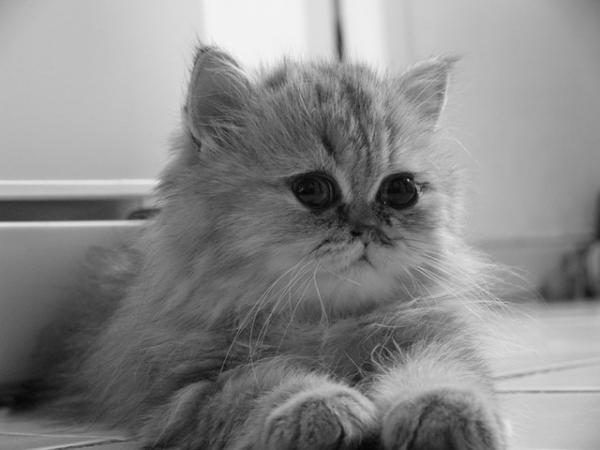
Much is said about the seniority of cats and of human adoration for these beautiful felines. At present, we know that they were already portrayed as companions of humans in ancient paintings of the Egyptian civilization, which inhabited the African continent around the year 3.000 aC. However, it is estimated that the process of domestication of the cat could have started more than 10.000 years ago [1].
Have you already asked which are the races of the oldest cats in the world? Well, in this article you will be able to know the kittens that accompany humanity thousands of years ago, having evolved side by side with us.
The natural cat breeds according to the FCA
As mentioned by a scientific study that has compared the genomic analyzes of more than 1000 cats belonging to 22 breeds, the FCA (Cat Fanciers Association) highlights 16 natural races among the 41 feline breeds that he recognizes today. Natural races are those that they were born spontaneously from regional varieties (landraces) and were domesticated by different ancient civilizations [2].
These natural cats they show a more stable genetic code that breeds created from controlled crosses between different specimens of other breeds. In general, this is expressed through greater physical resistance and a lower genetic predisposition to develop numerous degenerative pathologies. Subsequently, these varieties were recognized as races by the corresponding federations or organizations (the FCA, for example). As a result of that, the aim is to establish an aesthetic pattern based on selective crossings between the specimens.
Through selective breeding, some breeds achieved the objectives set by the standards, gaining the classification of established races in some feline societies. It is the example of the Persian cat, a very old cat that is no longer considered as natural, but as established.
The oldest feline breeds in the world
In addition to the sources that we have already mentioned, we also consulted an excellent investigation carried out by researchers from different universities in the United States [3], which analyzes the genome of different natural races, established, hybrid and mutations recognized by the FCA and by the TIC (The International Cat Association) and offers us new information about its origins, including a careful estimation of its birth years. Having said that, we list below the oldest cat breeds in the world. Do not miss it!
1. Egyptian Mau
For many experts, the Egyptian mau could be considered as the oldest cat race in the world. It is estimated that their ancestors have been retracted for the first time more than 4000 years ago, in Ancient Egypt. The breed would have begun to be perfected by the Egyptians themselves who were tasked with selecting the best specimens to create the optimum representation for the venerated listed feline.
Despite its antiquity, the breed was introduced in Europe during the 50 decade at the initiative of Princess Natalia Troubetzkoi. Quickly, she was welcomed as a beloved pet for her remarkable elegance and beauty, as well as for having a very special character.

2. Japanese Bobtail
The Japanese bobtail attracts attention because of its very short tail, similar to that of a rabbit, which is the result of a recessive gene present in this breed. It is estimated that their ancestors existed during the V century. However, these kittens were introduced in Japan (country to which the creation of the race is attributed) 1000 years ago. For many years, the bobtail has been the iconic street cat of Japan and, to this day, is an important character in local folklore.

3. Persian cat
These beautiful furry are born in the ancient Persia, where today is the territory of Iran. There is no scientific agreement on when the first Persian cats were born, but we know that the first duly registered specimen was imported from the city of Khorasan (Persia) to Italy. early in the year 1600.
However, the aesthetic pattern of the race that we know today has been influenced by the Turkish Angora and is established in the 1800 years, after its introduction into English society. Quickly, for its remarkable beauty and affectionate character, it became the 1 number of the most popular feline breeds in the world.

4. Turkish Angora
The Turkish Angora is a natural breed that originates in the Ankara region, in the center of Turkey, where it is considered a national treasure. It is estimated that this breed was introduced to Europe by the Vikings, probably during the X century. However, it begins to be officially registered in some French writings of the sixteenth century. It should be noted that for many years the term “angora” was used to refer to many long-haired cat breeds.
Although the breed can have different colors, the most valued angora specimens are those with completely white fur and one eye of each color (heterochromia). These felines are more reserved, prefer to live with one or two people and greatly appreciate their tranquility. Therefore, they are not usually indicated for large families or small children.
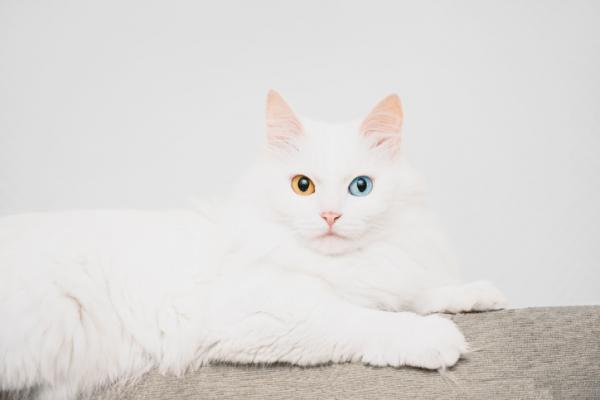
5. Turkish Van
The Turkish van is an autochthonous race not only of the regions near the Lake Van, in Turkey, but also from the center and south-west of Asia and the south-west of Russia. These cats have an important cultural value for the Turkish, Armenian and Kurdish citizens, being considered a controversial national symbol.
The breed has been incorporated in England in the 50 years, but it is estimated that his lineage is as old as that of the Angora, that is why the Turkish van is also considered one of the oldest cat breeds in the world. In relation to this, it is important to note that Angora cats and cats are different breeds with different genetic lineages, although they have generated a lot of confusion due to their aesthetic similarities.
For those who consider adopting a Turkish van as a pet, it is important to highlight that it is a dominant pussycat that will need to be socialized from a puppy (preferably in its first 8 weeks) to live peacefully with other animals.
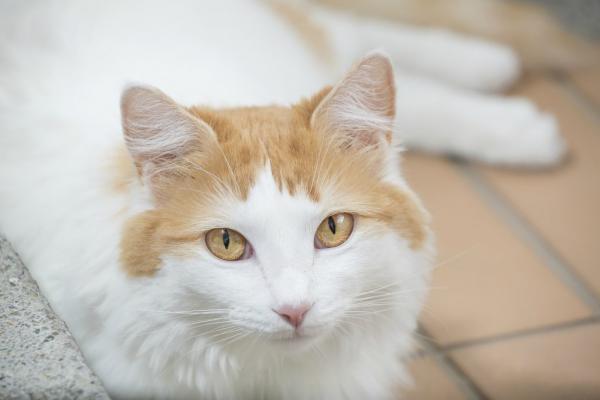
6. Chartreux
The Chartreux, also called “Carthusian”, is one of the oldest cat breeds in the world. Although its creation has been attributed to France, where it begins to be portrayed in the 30 decade, it is estimated that these felines were introduced in Europe during the crusades. Currently, it is estimated that they originate from the border between Iran and Turkey.
A curiosity about these kittens is that they have a long childhood, needing more than 1 year to mature and reach their adulthood. In addition, we must highlight its beautiful orange eyes and its bluish coat, something similar to Turkish blue.
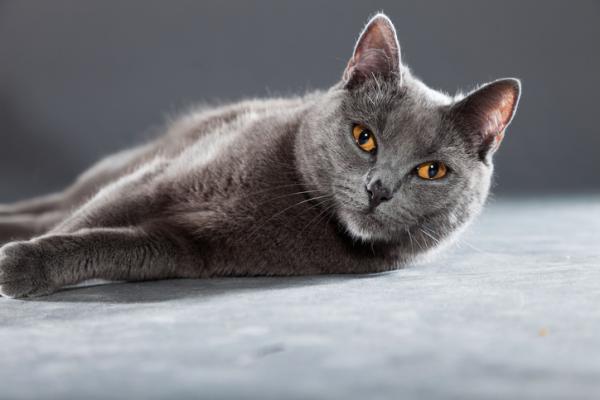
7. Norwegian Forest
This natural breed is one of the oldest breeds of cats in the world because descends directly from the Nordic wild cats that accompanied the Vikings in their boats to control the proliferation of rats. It is a cat with long hair, large and robust body (can weigh between 7 and 9 kg), with a very lively and affectionate temperament. Because of their large size and high energy, they adapt better to open spaces and love to enjoy outdoor activities.
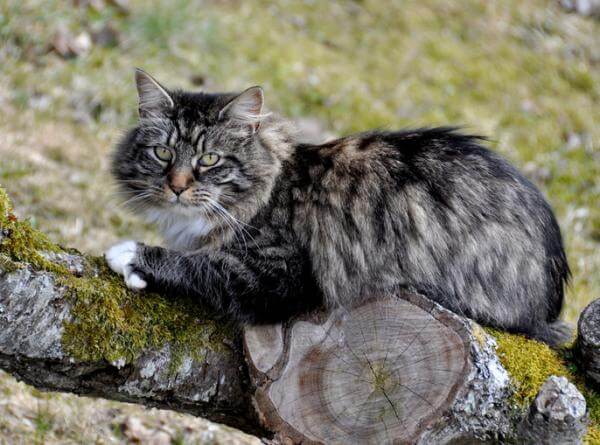
8. Korat
The korat, popularly known as “the lucky cat”, is a natural breed originally from Thailand, whose first records date from the year 1350. These kittens draw attention not only for their beautiful blue color of their fur and bright green eyes, but also for being one of the smallest kittens in the world. An adult korat usually weighs nothing more than 2 or 4 kilos.
Despite being also among the oldest cat breeds in the world, korat has regained some popularity in Western countries in recent decades. In fact, its introduction in the American continent was in the 60 years.

9. Siamese
Of course, the popular Siamese cat could not be absent from this list of the oldest cat breeds in the world. Currently, we can talk about the modern Siamese and the traditional Siamese (or thai). There is still no agreement on the origins of the ancient Siamese, but it is estimated that Thai cats already lived in the XIV century, in its place of origin, the kingdom of Siam (present Thailand). Its arrival to the European continent happened in the 19th century, in England, where it quickly gained space in the exhibitions of the London Crystal Palace. However, the race was recognized in the 50 decade and the first clubs were founded in the 80 years.
Siamese are recognized for their very loving and extremely loyal temperament, being able to create a unique relationship with their guardians. In addition, its short coat is not only beautiful, but also very practical to maintain, clean and healthy. And his blue and bright eyes are simply irresistible .
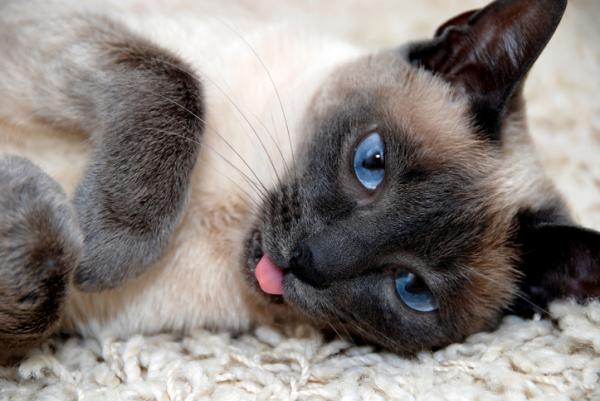
10. Abyssinian cat
The Abyssinian cat is native to the African continent, where today we find Ethiopia (formerly called Abyssinia). Your first copies they arrived in Europe in the middle of 1868, but the race has been recognized by the FCA in the 20th century. Its appearance closely resembles the Felis libic, the wild ancestor of domestic cats.
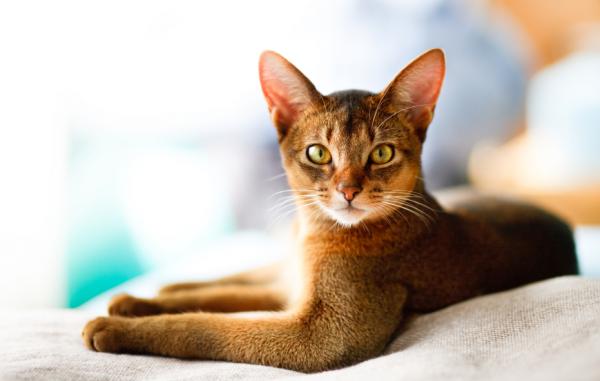
11. Russian blue cat (russian blue)
The Russian blue, also known as “Archangel cat“In their country of origin (Russia, of course), it is a very old race. However, its first known records were made after its introduction in the United Kingdom, in the 1860. According to some Russian legends, it is said that this feline has been kept secret for centuries for being considered an exclusive pet, which could only accompany the tsars.
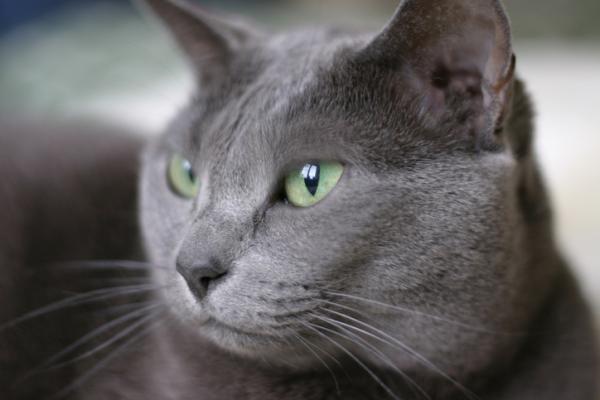
12. Manx
El Manx or Manx cat It is one of the most peculiar and striking natural races, as it has no tail due to a natural genetic mutation that has altered the original formation of its spine. It is a really beautiful pussy, with round and robust body, and owner of a sociable and intelligent character that allows you to establish very special links with your family and enjoy the company of other pets.
While the breed has been formalized and officially registered on the British island of Man, during the seventeenth century, its origin is much older and is surrounded by incredible myths. One of the most popular legends about its origin states that these kittens were already alive when the prophet Noah was building his ark. According to the myth, the cat Manx was enjoying a nap when Noah summoned all the species to get on the ark. Upon perceiving that there were no other animals left, the Manx cat ran out to avoid missing the trip. Upon reaching the ark, Noah was already closing the door and, to get inside, the pussycat made a spectacular leap. However, his agility was not enough and, by accident, the door of the ark cut off his tail. In this way, the Manx managed to save itself, but since then, the absence of tail is a hallmark of its origins.
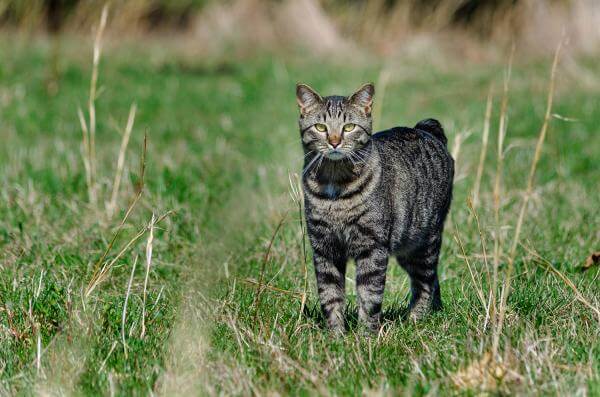
13. Maine coon
The maine coon is one of the most recognized and loved giant cat breeds in the world. An adult male of this breed can reach 70 centimeters long, with an average body weight of 10 kilos. Despite its imposing size and robustness, these felines are very affectionate and sociable. Among the curiosities about this breed, we can mention that the maine coon love to play with water. In addition, they have the incredible ability to meow in different tones, practically singing melodies to communicate with their tutors.
The origin of this race is attributed to the United States, where they began to register to mid-year 1860. However, its history also keeps various hypotheses and speculations, some more credible, others more fanciful. According to some theories, these pigs gained much popularity in Europe before reaching American soil. Other versions tell that the ancestors of these feline giants could have been introduced in Europe by the Vikings and the race would be the result of several natural crossings between these great kittens that accompanied the sailors with some wild cats.
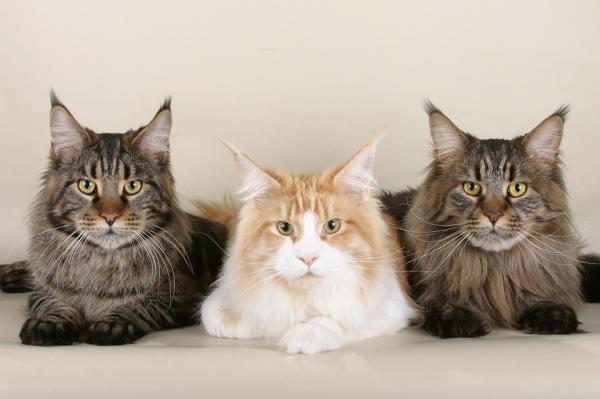
14. Siberian cat
The Siberian is also classified as a natural breed by the FCA. As the name suggests, these pussycats originate from the eastern region of Russia, more specifically from the territory of Siberia. Its origins still hold many mysteries, but it is known that these minins have been recorded since the times when the tsars ruled the territories today belonging to Russia and Ukraine. In addition to keeping company, these ancient cats played a crucial role in the control of rodents. In the eighteenth century, these pussycat also begin to be retracted in children’s stories and gain special popularity after appearing in the book “Our cats” by Harrison Wier, which was published in the 1889.
The Siberians keep a something wild, which is very attractive. In addition, they are very strong and resistant kittens, with a very loyal and affectionate character. Despite its abundant coat, the Siberian is among the best races for allergic, since they produce a very small amount of the FelD1 protein. However, before adopting a pussycat of this ancient breed, remember that they need special attention with the maintenance of their beautiful fur.

15 Singapore
Singapore cats are small (they do not usually weigh more than 3 or 4 kilos), but they have a strong and muscular body; they are so tiny, that the Smallest cat breed in the world. His head has a rounded shape, with almond shaped eyes and a small “M” on his forehead. In Singapore, its country of origin, you can still find specimens living in a semi-wild state, alternating their habits between the city and the jungles.
A curiosity is that these cats are so affectionate that, in some countries, they are known as “velcro cat” because of the very special bond they build with their tutors, following them everywhere and enjoying every moment with them.
Regarding its origins, we also find many hypotheses and few precise data, which is totally understandable considering that these pussycat they originated naturally among the streets of Singapore, where they did not receive special attention from the natives. It is known that the first specimens landed in the United States during the decade of the 70 and, from there, the race regained much popularity. However, it is estimated that their ancestors wandered through their native country from very remote times, being popularly known as “sewer cats”.

If you want to read more articles similar to The oldest cat breeds in the world, we recommend you to enter in our section of the most. .


